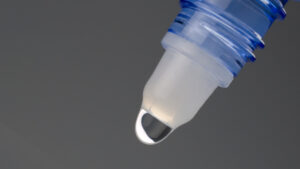Gary from Berkley writes: “I bought one of the popular hoverboards for my teenage son for Christmas. The first time my son used the hoverboard he rode in our house from the hallway to the living room. He went flying from the hoverboard and crashed into our coffee table after he encountered a small rise in the floor due to the living room rug. I thought hoverboards were safe and easy to ride even by teens. I feel misrepresented to. What are my legal rights?”
Gary, you were one of countless parents that recently bought a hoverboard for their children. The motorized, two-wheeled, self-balancing scooters – which can accelerate to 10-12 miles per hour – were one of the most popular gifts during the holiday season.
There have been many reports about some models that have caught fire. The U.S. Consumer Products Safety Commission has announced an investigation of the fire hazard.
Injuries from falls, not fires, however may be the greater concern with these new products. Hospital emergency rooms across the nation saw a spike in patients over the holiday season due to hoverboard accidents. The typical injuries have been wrist and back sprains and crushed fingers. In more serious cases, riders have suffered fractures and concussions.
In answer to your question Gary, our civil justice system contains checks and balances promoting safe products. In California, we call this legal doctrine “strict products liability.” The theory permits the imposition of tort liability against all those in the marketing chain – so not only manufacturers but also wholesalers, distributors and retailers.
Under strict products liability, the consumer is relieved of the burden of demonstrating that a specific act of negligence caused the injury. Instead, liability is imposed for placing a defective product on the market that causes injury. Recognized first in the case of unwholesome food products, such liability has now been extended to a variety of other products that create hazards if defective.
A product may be “defective” because of a manufacturing defect, a design defect, or a lack of adequate warning of known safety hazards.
For your question, I want to focus on the design defect of hoverboards. In a products liability case, the jury often determines the product is defectively designed based on the “consumer expectation” test.
Under this test, a product is defective in design if it failed to perform as safely as an ordinary consumer would expect (or have a right to expect) when using the product as used by other consumers. Advertising and description of the product by the manufacturer and retailers are taken into account in determining consumer expectations.
No safety standards govern the design, manufacturing, and sale of hoverboards. Despite this, manufacturers and retailers tout the electronic scooters as safe. The expectation of everyone buying a hoverboard has been shaped by the widespread advertising and descriptions of these products as “self-balancing,” “safe and stable,” “super smooth,” and so easy to ride that “most people master it in as little as 30 seconds!”
Based on its testing of hover boards, Consumer Reports found that they are extremely sensitive devices. Even experienced riders can suddenly fall off the scooters during normal use.
Gary, if you wish to return the product to the retailer, inform the retailer that the product contains a defect. The retailer should promptly accept its return as I assume it remains under warranty since you recently bought it. However, that only provides you a refund for the purchase price.
Depending upon how serious your son was injured, you may wish to obtain compensation for his injuries. In that case, keep the hoverboard, its packaging and your sales receipt. I suggest you consult further with me or another trial lawyer skilled in handling product liability cases to review the facts of your case.
This article was written by Chris Dolan and published by The San Francisco Examiner. Click here to read more of Chris Dolan’s weekly articles at SFExaminer.com.









